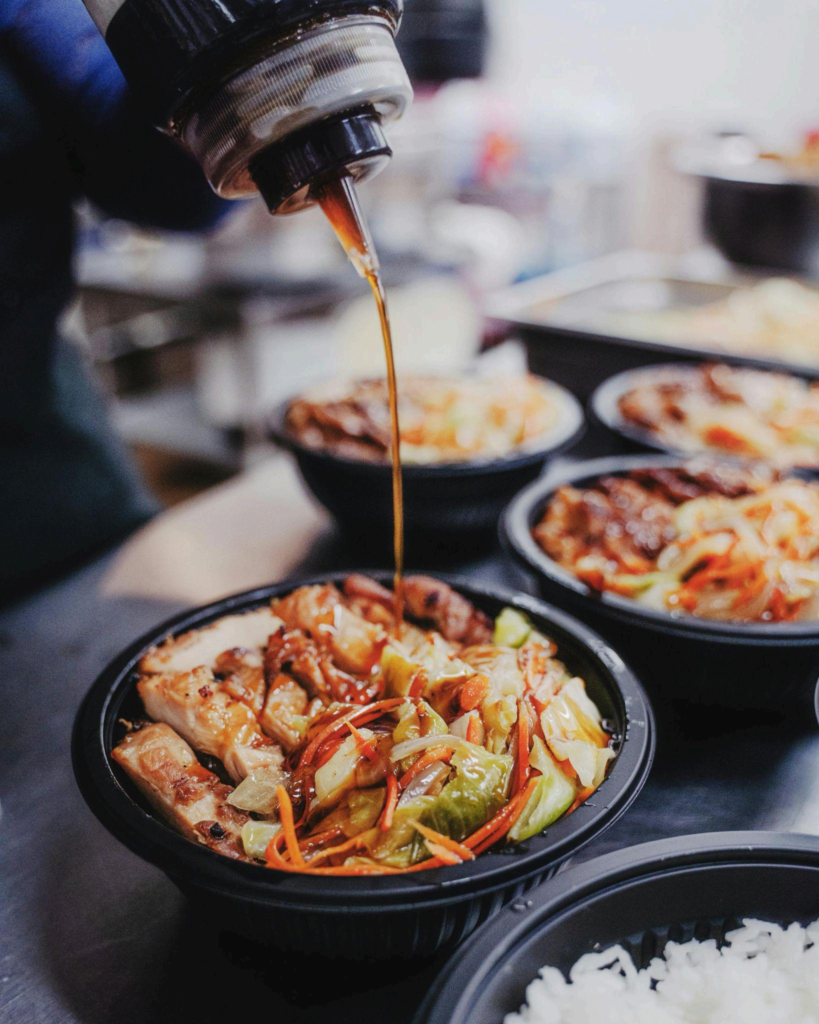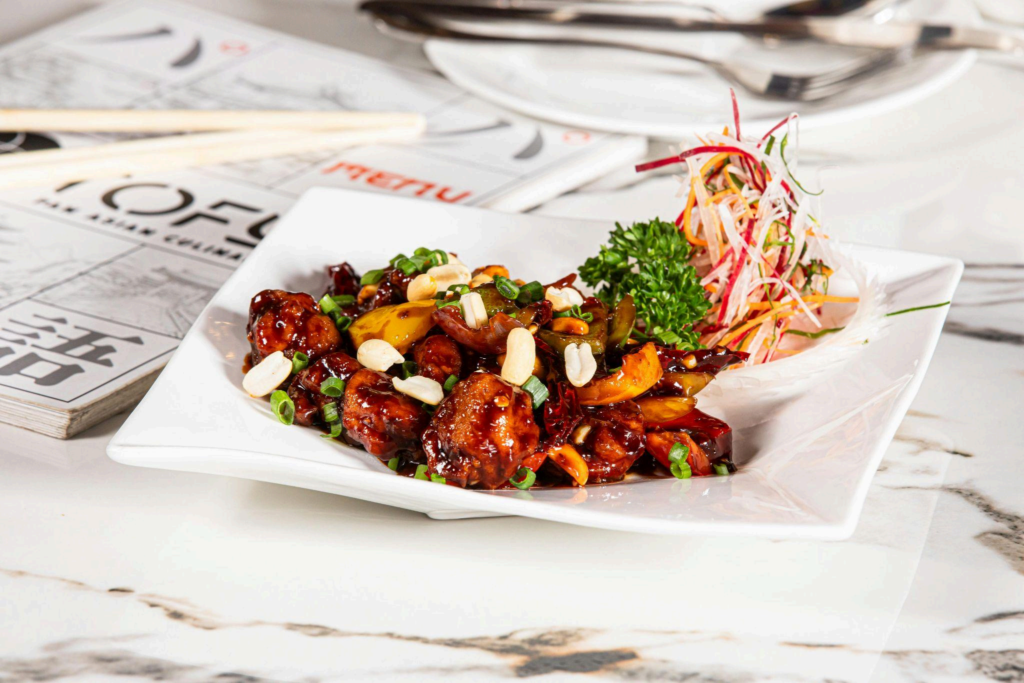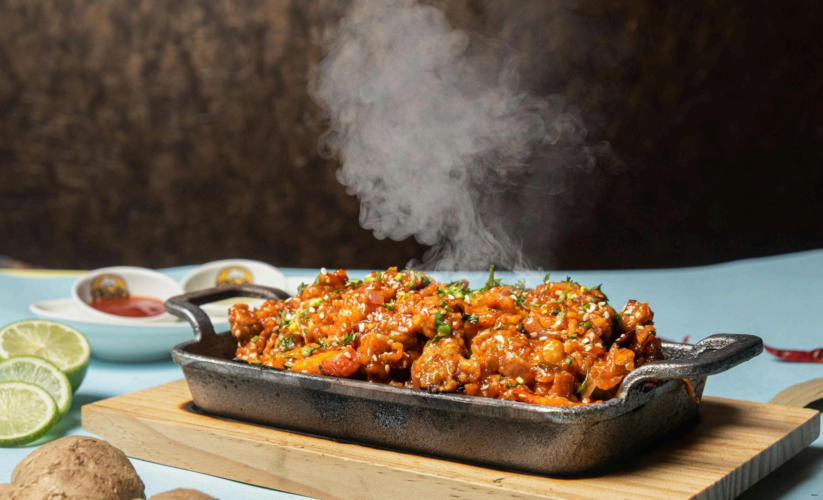
Chinese Kung Pao Chicken
Introduction
Chinese Kung Pao Chicken is a classic dish from the Sichuan province known for its
signature balance of sweet, sour, and spicy flavors. It is characterized by tender chicken
cubes stir-fried with peanuts, dried chilies, and a savory sauce. The Dish delivers a delightful
tingle of heat that can be adjusted to your preference.
Despite its bold taste, making Kung Pao Chicken at home is straightforward. You can
recreate this Chinese restaurant favorite in your kitchen with a few key ingredients—like
Sichuan peppercorns (for that numbing sensation) and dried chilies. Pair it with steamed rice
or noodles, and you’ll have a quick and satisfying meal that never fails to impress.
Why You’ll Love This Recipe
1. Authentic Flavors: Enjoy the sweet, spicy, and slightly tangy profile of true Sichuan
cuisine.
2. Quick & Easy: Perfect for a weeknight meal, as the cooking process is rapid once
you have everything prepped.
3. Customizable Heat: Control the level of spiciness by choosing milder or hotter dried
chilies, or adjusting the amount of chili peppers entirely.
4. Great Textural Contrast: Crispy peanuts and tender chicken create a satisfying bite.
5. Simple Ingredients: Most seasonings are pantry staples, making it easy to whip up
on short notice.
Ingredients
Marinade & Chicken
● 1 pound (450g) boneless, skinless chicken breasts or thighs, cut into 1-inch
cubes
● 1 tablespoon soy sauce
● 1 tablespoon Shaoxing wine (or dry sherry)● 1 teaspoon cornstarch
● 1 teaspoon vegetable oil (or any neutral oil)
Stir-Fry Sauce
● 1 tablespoon dark soy sauce (for color; you can substitute regular soy sauce if
needed)
● 1 tablespoon light soy sauce
● 1 tablespoon black vinegar (Chinkiang vinegar) or balsamic vinegar
● 1 tablespoon sugar (adjust to taste)
● 1 teaspoon sesame oil
● 2 tablespoons water or chicken broth
● ½ teaspoon cornstarch
Stir-Fry Aromatics
● 2 tablespoons vegetable oil (or peanut oil)
● 8–10 dried red chilies, deseeded for less heat (Sichuan chili peppers or arbol chilies
work well)
● 1 teaspoon Sichuan peppercorns (optional, for numbing heat)
● 2 cloves garlic, minced
● 1 teaspoon fresh ginger, minced
● 3 scallions (green onions), cut into 1-inch pieces
● ½ cup unsalted peanuts (or cashews)
Optional Garnishes & Sides
● Extra scallions, thinly sliced
● Steamed jasmine rice or noodles
● Stir-fried vegetables (e.g., bok choy, broccoli, or bell peppers)Step-by-Step Instructions
Step 1: Marinate the Chicken
1. Combine Marinade Ingredients
In a medium bowl, whisk together 1 tablespoon soy sauce, Shaoxing wine,
cornstarch, and 1 teaspoon vegetable oil.

2. Add Chicken
Place the chicken cubes in the bowl, turning them to coat evenly.
3. Rest
Let the chicken marinate for at least 15 minutes. If time allows, cover and refrigerate
for up to 30 minutes for deeper flavor.
Step 2: Prepare the Stir-Fry Sauce
1. Stir the Ingredients
In a small bowl, whisk together the dark soy sauce, light soy sauce, black vinegar,
sugar, sesame oil, water (or chicken broth), and cornstarch.
2. Adjust Seasoning
Taste a drop of the sauce (keeping in mind it’s concentrated) to see if you want more
sweetness, saltiness, or tang.
Step 3: Prep the Aromatics
1. Dried Chilies
If you want a milder heat, remove the seeds. Keep more seeds for spicier results.
Cut the chilies into 1-inch segments, if desired.
2. Sichuan Peppercorns
Lightly crush them with a mortar and pestle or the flat side of a knife to release their
fragrance.
3. Chop Garlic, Ginger & Scallions
○ Garlic & Ginger: Mince them finely.○ Scallions: Cut into 1-inch pieces. Separate the white parts from the green
tops, as they have slightly different cooking times.
Step 4: Stir-Fry
1. Heat the Wok or Pan
Warm 2 tablespoons of vegetable oil in a wok or large skillet over high heat. The oil
should shimmer but not smoke excessively.
2. Fry Chilies & Peppercorns
Add the dried chilies and crushed Sichuan peppercorns. Stir-fry for 15–20 seconds,
being careful not to burn them. You want to release their aromas without scorching.
3. Add Chicken
Drain any excess marinade and carefully place the marinated chicken into the wok.
Spread the pieces out in a single layer so they sear rather than steam. Stir-fry for 3–4
minutes, until the chicken begins to turn golden on the edges.
4. Add Garlic & Ginger
Toss in the minced garlic and ginger. Stir-fry for 30 seconds, letting the fragrance
bloom.

5. Incorporate Scallions
Add the white parts of the scallions first if you separated them. Stir-fry for another 30
seconds.
6. Pour in the Sauce
Give the sauce a quick stir to redistribute the cornstarch, then pour it into the wok.
Stir-fry for 1 minute, allowing the sauce to thicken and coat the chicken evenly.
7. Peanuts & Green Tops
Finally, toss in the peanuts and the green tops of the scallions. Stir for 30 seconds
to warm the peanuts and mingle flavors.
Step 5: Plate and Serve
1. Check the Consistency
If the sauce seems too thick, add a tablespoon of water or chicken broth. If it’s too
thin, let it bubble for another minute to reduce.
2. Plate
Transfer Kung Pao Chicken to a serving dish.3. Garnish
You can scatter extra scallions or crushed peanuts on top for added texture.
4. Conversation Tip
Serve hot alongside steamed jasmine rice or noodles. The warmth of the dish pairs
perfectly with a cool beverage.
Meal Prep & Storage Tips
1. Prep Ahead
○ Chop all ingredients (chicken, chilies, garlic, ginger, scallions) and mix the
sauce in separate containers.
○ This makes the final cooking process super quick—perfect for busy
weeknights.
2. Refrigerating Leftovers
Cool leftover Kung Pao Chicken to room temperature, then store in an airtight
container in the fridge for 3–4 days.
3. Reheating
Warm in a skillet over medium heat, adding a splash of water or broth to loosen the
sauce if it has thickened.
4. Freezing
While possible, freezing may alter the texture of the vegetables and peanuts. If you
do freeze, consider removing the peanuts before storing, then add fresh peanuts
when reheating.
Variations & Substitutions
1. Protein Swaps
○ Shrimp: Stir-fry shrimp until pink and slightly curled, avoiding overcooking.
○ Tofu: Use firm or extra-firm tofu, pressing out excess moisture. Cubes of tofu
can take on the same marinade before stir-frying.
○ Beef or Pork: Thinly slice and marinate similarly. Adjust cooking time based
on thickness.2. Vegetable Add-Ons
○ Bell Peppers or Zucchini: Slice into strips or cubes for extra color and
nutrients.
○ Mushrooms: Stir-fry with the chicken to soak up the sauce.
3. Heat Level
○ Less Spicy: Reduce the number of dried chilies or use milder ones. Remove
the seeds for less heat.
○ More Spicy: Add fresh chili peppers, a spoonful of chili garlic sauce, or a
pinch of red pepper flakes.
4. Nut Choices
○ Cashews: For a creamier, sweeter note.
○ Almonds: Provide a crunchy texture, though the flavor differs slightly from
peanuts.
Common Questions
Q: Do I really need Sichuan peppercorns?
A: They’re key to the authentic mala (numbing-spicy) sensation. However, you can omit
them if unavailable or if you’re not a fan of that tingly heat. The dish will still taste delicious.
Q: Can I use less oil?
A: Yes. Use 1 tablespoon of oil if you prefer. Just watch for sticking, especially if you’re
using a stainless-steel skillet rather than a nonstick pan or seasoned wok.
Q: How do I prevent dried chilies from burning?
A: Keep the heat high, but move quickly. Adding the chicken soon after the chilies helps
prevent them from scorching. You can also reduce the heat to medium if you’re new to
stir-frying.
Q: I only have light soy sauce. Can I skip the dark soy sauce?
A: Absolutely. Dark soy sauce mainly adds color and a deeper flavor, but you can omit it and
simply use slightly more light soy sauce.
Q: Do I need to roast the peanuts first?
A: If you have raw peanuts, consider lightly roasting them in a dry pan beforehand. This
step enhances their flavor. If using pre-roasted peanuts, you can skip additional roasting.

Conclusion
Chinese Kung Pao Chicken is a dish that embodies the fiery and complex nature of Sichuan
cuisine. With tender chicken chunks, crunchy peanuts, and a balanced sauce that sways
between spicy, sweet, and tangy, it’s no wonder this entrée has become a favorite around
the globe. By mastering a few simple stir-fry techniques—high heat, quick cooking, and
proper prep—you can replicate restaurant-quality Kung Pao Chicken in under 30 minutes.
Whether you tweak the spice level, swap in tofu for a vegetarian version, or add colorful
veggies to suit your taste, this flexible recipe invites experimentation while remaining
undeniably true to its Sichuan roots. Serve it with steaming rice or noodles, and let each bite
transport you to the bustling streets of Chengdu, the heart of spicy Chinese cuisine.
So gather your wok, your spices, and your appetite. With this detailed guide, you’ll be
dishing up a sizzling plate of authentic Kung Pao Chicken in no time, satisfying both spice
lovers and those seeking a dash of excitement in their weeknight dinners. 再见 (zàijiàn), and
happy cooking!
Enjoy your Chinese Kung Pao Chicken! Feel free to customize the heat, garnish with extra
scallions, and serve with your favorite sides. Once you taste that addictive blend of sweet,
sour, and spicy flavors, you may find Kung Pao Chicken becoming a regular on your dinner
rotation.





